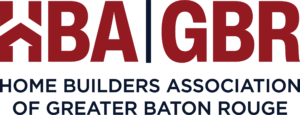
Total payroll employment fell by 20.5 million in April and the unemployment rate soared to 14.7%. Residential construction employment decreased by 415,000 in April to 2.5 million. This drop brought the current level of residential construction employment back to the level in December 2015 (2,538,000 jobs). Total construction industry (both residential and nonresidential) employment dropped by about 1 million to 6.6 million in April.

The Bureau of Labor Statistics released the Employment Situation Summary for April. Total nonfarm payroll employment fell by 20.5 million in April, after a loss of 870,000 jobs (revised) in March. The April job loss was unprecedented in the history of data series since 1939 and brought total nonfarm payroll employment to the lowest level since February 2011. The Labor Department mentioned in the release that the changes in these measures reflect the impact of the coronavirus (COVID-19) pandemic and efforts to contain it.

Meanwhile, the unemployment rate increased by 10.3 percentage points to 14.7% in April. It was the highest rate that hasn’t been seen since the Great Depression (lasting from 1929 to 1939). As people stayed at home and businesses shut down to slow the spread of the COVID-19, 33.5 million people across the country have filed for unemployment benefits over the past seven weeks, seeking financial relief. If you were looking for good news report, perhaps consider that 18 million people classified themselves as on furlough on a temporary basis, perhaps setting the stage for rebound as the economy reopens.
In April, the number of employed persons decreased by about 22.4 million, while the number of unemployed persons rose by 15.9 million to 23 million. The labor force participation rate, the proportion of the population either looking for a job or already with a job, declined by 2.5 percentage points to 60.2%% in April.

The April job loss broadly reflected the effects of the COVID-19 pandemic on the labor market and were widespread in all major industry sectors. Employment in leisure and hospitality plummeted about 7.7 million, the largest decline among all major industry sectors. Almost three quarters of these drop occurred in food services and drinking places. Meanwhile, professional and business services, retail trade and health care and social assistance lost more than 2 million jobs in April.

Additionally, employment in the overall construction sector decreased by 975,000 in April. The number of residential construction jobs decreased by 415,000 in April, the largest drop ever in the history of data series.
Residential construction employment now stands at 2.5 million in April, broken down as 722,000 builders and 1.8 million residential specialty trade contractors. The April job loss dragged the 6-month moving average down to the negative. The 6-month moving average of job gains for residential construction is -64,217 a month. Over the last 12 months, home builders and remodelers shed 353,700 jobs on a net basis. Since the low point following the Great Recession, residential construction has gained 554,700 positions, a big drop from 983,600 positions in February 2020 due to the impact of the COVID-10 pandemic.
In April, the unemployment rate for construction workers rose to 16.1% on a seasonally adjusted basis, from 5.3% in March. It was the highest rate since July 2011. The unemployment rate for construction workers has trended downward for the past ten years and remained at a relative low level in the beginning of 2020. The jump in April reflected the impact of the COVID-19 pandemic on construction industry.














